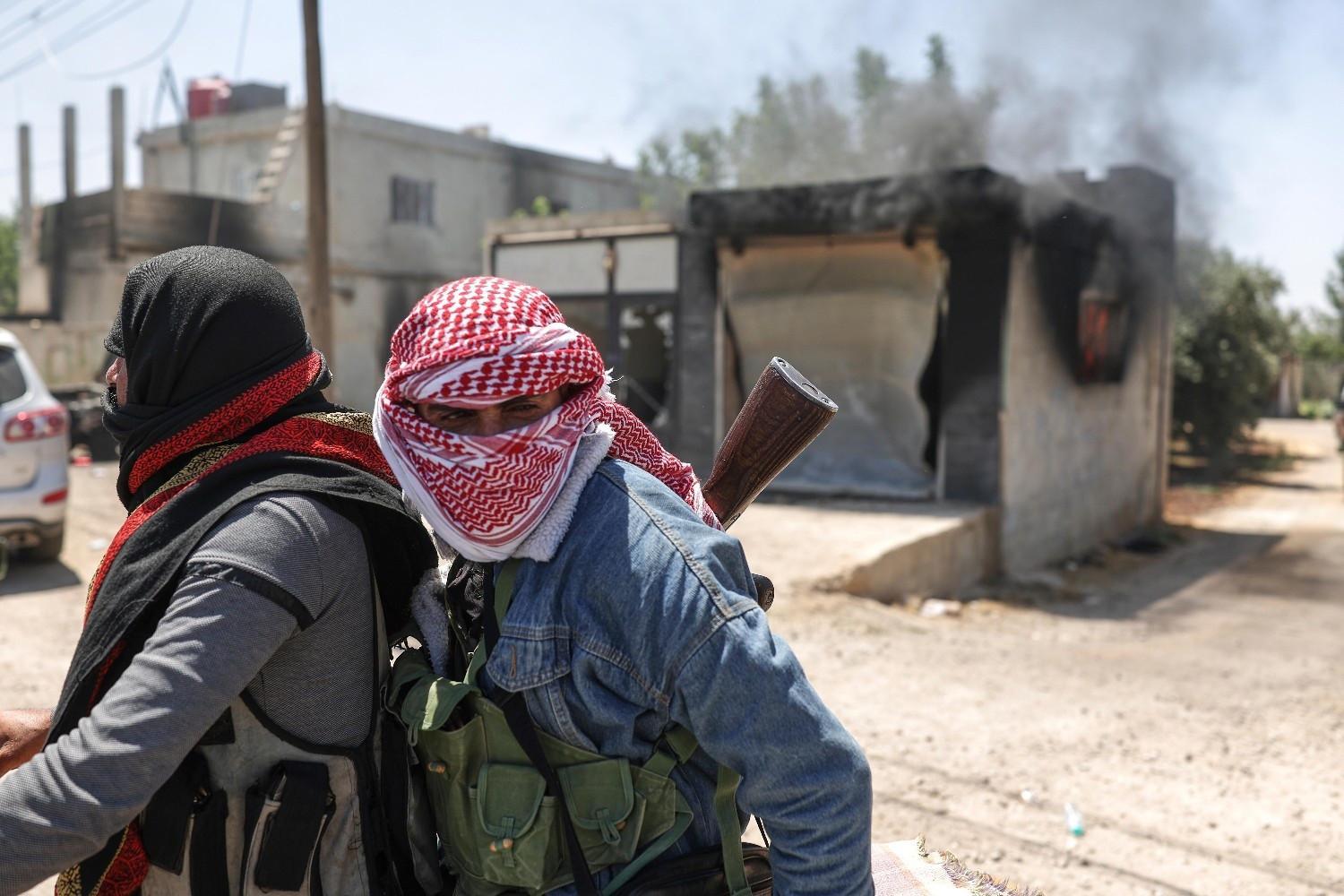
Bedouin fighters deploy at Mazraa village on the outskirts of Sweida city, during clashes between the Bedouin clans and Druze militias, southern Syria, Friday, July 18, 2025. (AP Photo/Ghaith Alsayed)
Clashes between Druze militias and Arab Bedouin tribes reignited on July 18 in Sweida, the stronghold of Syria’s Druze community, deepening instability and uncertainty in the region after a previous ceasefire failed to restore calm.
Combatants from both sides confirmed the resumption of hostilities, while media reported heavy gunfire and renewed exchanges.
Syrian government forces withdrawn from Sweida province on July 17 following intense Israeli airstrikes, under a ceasefire that temporarily deescalated tensions.
However, reports soon emerged accusing Druze groups of forcibly displacing local Arab tribes and setting fire to their homes. In response, Arab tribes across Syria declared a state of full mobilization.
Some media outlets reported that more than 50,000 tribal fighters were advancing toward Sweida in defense of the Bedouin, with tribes in Lebanon, Iraq and Jordan reportedly expressing willingness to join the campaign.
Since July 13, nearly 600 people have been killed in Sweida province amid fierce clashes between Druze fighters and Sunni Bedouin tribes, according to the Syrian Observatory for Human Rights.
Although a ceasefire was reimposed on July 17, Sharaa’s office accused Druze factions of violating the terms of the agreement.
On July 18, tribal reinforcements encircled Sweida, taking positions in villages on the city’s outskirts to bolster the Bedouin resistance.
Syria’s Interior Ministry denied reports that Damascus’ units were preparing to redeploy to Sweida. However, sources later suggested that such a move could not be ruled out entirely.
Meanwhile, Israeli media claimed that Israel will authorize a limited 48-hour deployment of Syrian internal security forces into Suwayda.
Israel’s public broadcaster KAN said the temporary move was part of a calculated attempt to forestall further escalation along Israel’s northeastern border.
Israel had previously rejected any Syrian military presence in the region and had carried out airstrikes against targets in and around Damascus. Although Israel, which has its own Druze population, portrays itself as a protector of the Druze minority, some analysts argue that this stance serves as a pretext for maintaining a buffer against Syrian regime forces near its frontier.
Meanwhile, the United States said that it did not support recent Israeli strikes on Syria and had made clear its displeasure.
"I won't speak to future conversations or past ones. What we're dealing with now is this particular episode, what was required, and I think we've been very clear about our displeasure, certainly that the President has, and we've worked very quickly to have it stopped,” U.S. State Department spokesperson Tammy Bruce said.